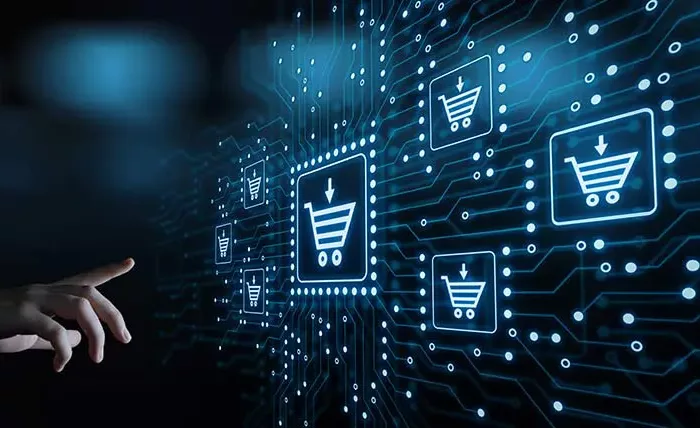Share
Author
George Anderson
Share
First published Jul 26, 2017. Refreshed Sep 29, 2021.
The world of SAP B2B eCommerce is complex. People from multiple departments have problems that B2B eCommerce can solve—but the project can also introduce new problems for each department if you don’t have a methodology for taking everyone’s needs into account. Whatever your role in the project, it’s important to understand who the other stakeholders are, whether they’re internal or external.
Most B2B eCommerce stakeholders work at the company which is implementing eCommerce—a company which we’ll call “the client.” The customers of this company, who will log in and buy through the eCommerce store, we’ll call “the customers.”
Here are the 6 most important stakeholders in B2B eCommerce (and what they need out of the web store).
1. Your customers who will use B2B eCommerce
If you’re in business to satisfy your customers, then B2B eCommerce must support that core goal. But what do B2B customers want? They’re a diverse group, but generally speaking, here’s what B2B eCommerce should do for them.
- Be easy to use and understand.
- Present them with the information they need to accomplish the task at hand.
- Allow them to build orders by catalog browsing or by direct SKU entry.
- Use their native language.
- Work on multiple devices (though our research shows that most of our clients’ customers are still using desktop, even in the wake of COVID-19 and the work-from-home revolution).
The B2B customer isn’t buying as a consumer—she’s buying because it’s her job. She wants to get in, find what she needs, and get out so she can move on to the next task in her busy day. To that end, she doesn’t want to see:
- A B2B eCommerce solution that lets her purchase discontinued SKUs because SAP data is not sourced in real time.
- A B2B eCommerce solution that sends orders into a black hole after placement. (She wants to track her orders within the SAP customer portal!)
- A B2B eCommerce solution that has a great, flashy design but can’t deal with the complexities of B2B purchasing.
- A B2B eCommerce solution that requires lots of training to use.
2. Your IT executive
The IT executive (CIO, CTO or Director of IT) has a crucial voice in the B2B eCommerce project. They communicate IT concerns to the C-suite. Here’s what the IT executive typically wants out of a B2B eCommerce solution.
- The solution should make it easy to get the buy-in of the rest of the C-suite.
- The solution should play well with the company’s existing SAP installation.
- The solution should have minimal impact (read: no impact) on existing IT staffing requirements.
- The solution should show the greatest potential for a quick win. (We’ve established 180-day implementation windows as the new industry standard.)
A SAP eCommerce solution that hits all of the above points will quickly rise to the top of the pile in the mind of the IT executive. On that note, it’s worth mentioning things that the IT executive doesn’t want to see. Here are some typical dealbreakers for this persona.
- A standalone solution that doesn’t talk to SAP at all.
- A solution that relies entirely on batch updates to sync B2B eCommerce with SAP.
- A solution that is poorly architected and will create a heavy workload for the IT staff down the road.
- A solution that will take 9-18 months to implement.
3. Your IT managers and SAP admins
Where the IT executive looks at the company’s IT ecosystem from 30,000 feet, the IT manager (or SAP admin) is the boots on the ground when it comes to SAP ERP. She deals with ABAP, transport, master data, and more—day in, day out. Her concerns are very specific when it comes to B2B eCommerce. Here’s what she’s looking for in a B2B eCommerce solution.
- The solution shouldn’t add to her already massive workload.
- The solution should post 100% error-free orders to SAP, hands-free.
- The solution should come with its own support team for troubleshooting (so she doesn’t have to).
- The solution should be properly integrated into SAP (so it doesn’t cause problems down the road).
A B2B eCommerce solution that hits all these points will make her happy. Here are some things she doesn’t want to see.
- A B2B eCommerce solution that will add to her workload because the solution provider doesn’t support their product and the third-party support vendor doesn’t understand the SAP integration.
- A solution that requires gigantic batch updates between B2B eCommerce and SAP.
- A botched B2B eCommerce integration with SAP that will lead to “spaghettiware” architecture as more and more bandaids are applied.
4. Your sales executive
The sales team is the canary in the coalmine of your business. If sales is happy, your business is happy. The sales executive’s perspective on B2B eCommerce is crucial. This persona is concerned with one thing—efficient generation of revenue. Here’s what the sales executive wants in a B2B eCommerce solution.
- The solution should work as a mobile order-entry portal for sales reps.
- The solution should handle routine re-orders without a human touch so the sales team can focus on personalized service for the most high-value customers.
- The solution should provide real-time credit checks and support electronic payments (so smaller accounts can order through self-service).
- The solution should provide personalized catalogs to logged-in users.
Because the sales executive is focused on generating revenue (and doing it efficiently), here’s what they don’t want to see.
- A B2B eCommerce solution that is difficult to use.
- A B2B eCommerce solution that doesn’t work for sales reps as an order-entry portal.
- A B2B eCommerce solution that increases the number of phone calls coming to the sales team.
- A B2B eCommerce solution with limited search functionality and/or no capacity for personalized catalogs for logged-in accounts.
5. Your finance department
B2B eCommerce is an investment—though, believe it or not, you should only spend about 0.01% – 10% of eCommerce revenues on your eCommerce solution, depending on complexity and desired functionality. While our solution is far more cost-effective than the alternatives, our clients’ finance stakeholders generally have questions. Here’s what they want to see in B2B eCommerce.
- A solution that will deliver ROI from B2B eCommerce.
- A solution that requires minimal (read: no) manhours from existing resources on staff.
- A solution that offers manageable implementation, licensing and support fees.
- A solution that costs less than 1% of B2B eCommerce revenues to maintain.
- A solution that will be up and running (and starting to pay for itself) in 180 days or less.
- A solution that’s flexible enough to capture revenue from all customer types as the project expands after its initial launch.
Because finance is so focused on the monetary health of the company, here’s what they don’t want to see.
- A bloated B2B eCommerce solution that costs millions of dollars to set up and run, year-in and year-out.
- A “spaghettiware” B2B eCommerce architecture that will continue to drain resources over the years.
- A B2B eCommerce solution from a vendor who may not be in business 5 years down the road.
- A B2B eCommerce project with shaky ROI projections.
6. Your marketing department
Because marketing is generally focused on the acquisition of new business, they will probably want to implement marketing techniques borrowed from B2C (where the focus is usually attracting new customers). Here’s what marketing will advocate in a B2B eCommerce solution.
- The solution should offer a great user experience and make it easy to attract new business.
- The solution should look great on any device, with an attractive, highly functional design.
- The solution should offer cross-selling, upselling and other personalized promotions at the appropriate stages of the customer journey.
- The solution should support all the staples of good branding, including rich content and product imagery.
- The solution should integrate with third-party tools for email marketing, analytics and more.
Because marketing is tasked with maintaining a great brand image, here are the things they don’t want to see.
- A B2B eCommerce solution that looks like it was built in 2002.
- A B2B eCommerce solution that doesn’t display accurate SAP data in real time.
- A B2B eCommerce solution that is hard to use.
- A B2B eCommerce solution that doesn’t support rich content.
The takeaway
It may seem like some of these concerns are mutually exclusive. However, we believe that a properly-architected B2B eCommerce solution can go beyond satisfying every single stakeholder—it can actually delight them. That’s the thinking behind the Corevist Platform.
Want to become Easier To Do Business With?
Check out the Corevist Platform.
Managed B2B portals and eCommerce with prebuilt integration for ECC and S/4HANA.










